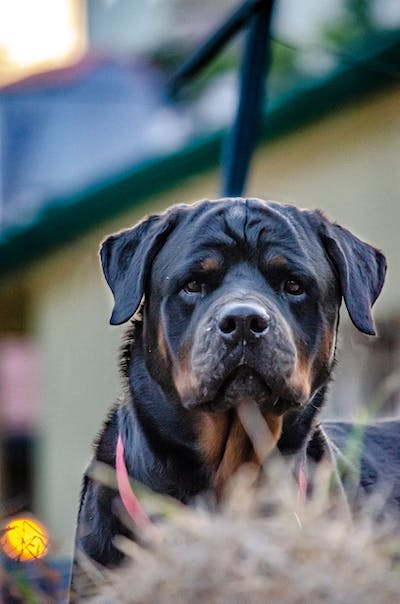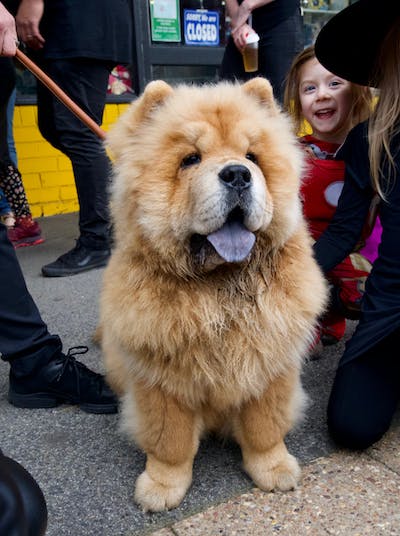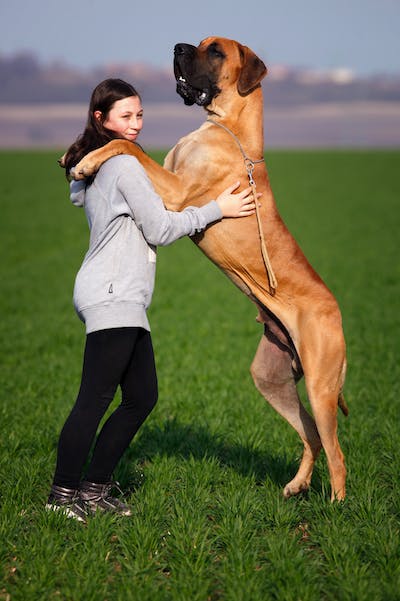Top 10 Banned Dog Breeds: Dogs have long been cherished as loyal companions, earning the title of man’s best friend. However, certain breeds have faced bans and restrictions in various jurisdictions around the world. In this comprehensive article, we will delve into the top 10 banned dog breeds, shedding light on the reasons behind these regulations and exploring the controversies surrounding them.
1. Pit Bulls: Misunderstood or Dangerous?

Pit Bulls frequently occupy the top spot on the list of banned dog breeds. These muscular dogs, known for their powerful jaws, have unfortunately gained a reputation for aggression. Nonetheless, many advocates argue that their temperament is not inherently aggressive, and responsible ownership along with proper training can ensure their well-rounded behavior.
2. Rottweilers: A Powerful Breed with an Unfair Reputation

The Rottweiler is an imposing and robust dog known for its strength and muscular build. With an average weight of up to 130 pounds, this breed exhibits remarkable power. Unfortunately, the Rottweiler has gained a reputation for being dangerous, largely due to factors such as genetic predisposition, mistreatment, and lack of proper training and socialization. However, it is important to understand that not all Rottweilers are aggressive beasts. In fact, responsible ownership and care can nurture their true potential as loving and loyal companions. Let’s delve deeper into the world of the Rottweiler and uncover the truth about this remarkable breed.
The Rottweiler’s Reputation
Often cited as a dangerous breed, the Rottweiler has been associated with incidents of dog attacks. According to the Merritt Clifton Dog Bite Statistics, there were 535 reported Rottweiler-related attacks between 1982 and 2014. Out of these attacks, 297 victims were children, with a staggering 85 resulting in fatalities. These statistics highlight the importance of responsible ownership and proper training to ensure the well-being of both the dog and those around it.
3. Gull Dong: Strength and Control

Moving beyond the Rottweiler, let us explore another breed known for its strength and aggressive tendencies – the Gull Dong. The Gull Dong is a crossbreed between a Bully Kutta and a Gull Terrier, resulting in a powerful and formidable dog. Originally bred for fighting, these dogs demand experienced owners who are committed to providing extensive training from an early age. With an average weight of 140 pounds, the Gull Dong possesses considerable force, making it essential to establish control through professional training.
Overcoming Aggression through Training
The National Dog Bite Statistics indicate that between 2005 and 2011, there were 68 reported dog attacks involving Gull Dongs, with 8 of them resulting in fatalities. However, it is crucial to note that early socialization and comprehensive training can significantly impact the Gull Dong’s behavior. With the right approach, these dogs can exhibit loyalty, love, and a fierce protectiveness towards their families. While their aggressive tendencies must be acknowledged, it is equally important to recognize their potential to save lives and serve as faithful companions.
4. German Shepherds: Heroes or Villains?

German Shepherds are widely recognized for their versatility, intelligence, and strong work ethic. Despite their exceptional qualities, they have faced bans and restrictions in certain jurisdictions. Concerns often revolve around their size and protective nature. However, responsible ownership and training can effectively address any potential issues, ensuring German Shepherds remain well-behaved companions.
5. Staffordshire Bull Terriers: Strength and Controversy

Staffordshire Bull Terriers, frequently mistaken for Pit Bulls, have also encountered restrictions. These energetic and affectionate dogs are known for their love of people, especially children. However, responsible ownership, socialization, and training are vital to maintain their well-mannered and friendly behavior.
6. Chow Chows: Ancient Breed, Modern Regulations

Originating from China, Chow Chows possess a unique appearance and a reputation for independence. Their inclusion in banned dog breed lists arises from concerns about potential aggression towards unfamiliar individuals or other animals. Early socialization and positive reinforcement training are essential for raising a well-behaved Chow Chow.
7. Great Danes: Size Matters

Great Danes, known for their gentle nature despite their imposing size, have faced bans in some jurisdictions due to concerns about unintentional harm caused by their sheer mass. Proper socialization and training from an early age are crucial to ensure they become well-behaved and obedient companions.
8. The Bold Bull Terrier

Characterized by its distinctive, egg-shaped head and muscular physique, the Bull Terrier is a breed that has often faced scrutiny due to mistreatment and training aimed at promoting aggression. Although not inherently dangerous towards humans, Bull Terriers can pose a risk to smaller dogs and animals due to their strong prey drive.
Understanding their Prey Drive
The Bull Terrier’s prey drive is a natural instinct, rooted in its history as a hunting dog. If not properly channeled and controlled, this drive can lead to aggression towards smaller animals and result in severe injuries during an attack. Weighing up to 65 pounds, these dogs are quick and resilient. However, with appropriate training, care, and socialization, Bull Terriers can make excellent family pets, even in households with small animals.
9. Bullmastiff: Intelligent Protectors

Bullmastiffs are highly intelligent, athletic, and energetic dogs known for their naturally protective temperament. This breed’s inherent aggression can prove fatal if not adequately managed. As a result, Bullmastiffs are commonly employed as guard dogs due to their ability to assess threats and act accordingly.
The Importance of Training
Bullmastiffs caused 14 fatalities between 2005 and 2017, underscoring the significance of responsible ownership and comprehensive training. Early training and socialization are key to fostering obedience and reliability in these dogs. With consistent guidance and care, Bullmastiffs can become loyal and obedient companions, ensuring a harmonious relationship between the dog and its family.
10. The Powerful Neapolitan Mastiff

The Neapolitan Mastiff, historically associated with gladiator dogs in the Roman Colosseum, commands attention due to its sheer size. With males weighing up to 200 pounds, this breed demands a unique understanding and responsible ownership. While Neapolitan Mastiffs are not inherently considered dangerous, some countries, such as Singapore, prohibit their ownership. In Romania, prospective owners must undergo psychological evaluations before owning one of these dogs, emphasizing the potential risks associated with their size and strength.
Caution Around Children
Fully grown Neapolitan Mastiffs, due to their imposing size, should not be kept around children. Their sheer strength can inadvertently cause harm, making it crucial to prioritize safety when interacting with these dogs. Responsible ownership, proper training, and secure containment are essential to ensuring a well-balanced and safe environment for both the dog and those around it.
In Conclusion
It is important to approach breeds such as the Rottweiler, Gull Dong, Bull Terrier, Bullmastiff, and Neapolitan Mastiff with caution and respect. While they may possess certain characteristics that demand careful handling and training, these breeds also have the potential to exhibit loyalty, bravery, and love when provided with the right environment and care. Responsible ownership, early socialization, and professional training are essential in unlocking their true potential and nurturing their positive traits. By understanding and appreciating the complexities of these breeds, we can foster safe and fulfilling relationships with these remarkable dogs.

